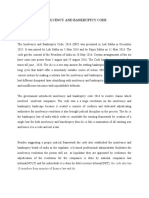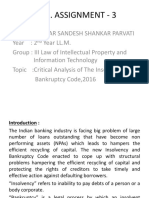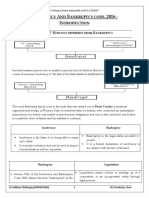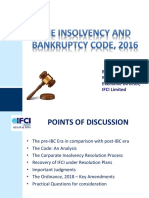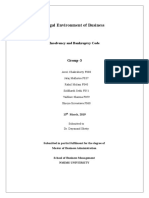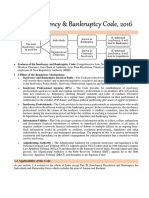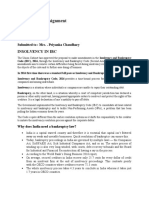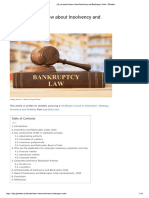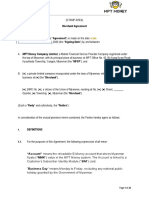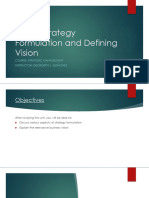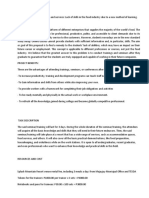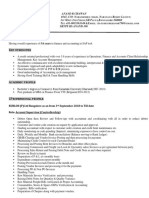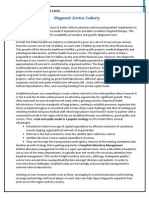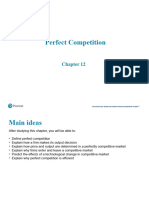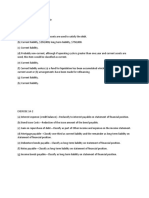0% found this document useful (0 votes)
13 views3 pagesChapter 1 Notes
The document outlines the concepts of insolvency and bankruptcy, detailing the legal framework established by the Insolvency and Bankruptcy Code (IBC) of 2016, which replaced previous fragmented laws. It describes the objectives of the IBC, its structure, institutional framework, and processes for corporate and individual insolvency. Additionally, it highlights the amendments made to the IBC and key facts relevant for examination purposes.
Uploaded by
t7u7s7h7a7r7Copyright
© © All Rights Reserved
We take content rights seriously. If you suspect this is your content, claim it here.
Available Formats
Download as PDF, TXT or read online on Scribd
0% found this document useful (0 votes)
13 views3 pagesChapter 1 Notes
The document outlines the concepts of insolvency and bankruptcy, detailing the legal framework established by the Insolvency and Bankruptcy Code (IBC) of 2016, which replaced previous fragmented laws. It describes the objectives of the IBC, its structure, institutional framework, and processes for corporate and individual insolvency. Additionally, it highlights the amendments made to the IBC and key facts relevant for examination purposes.
Uploaded by
t7u7s7h7a7r7Copyright
© © All Rights Reserved
We take content rights seriously. If you suspect this is your content, claim it here.
Available Formats
Download as PDF, TXT or read online on Scribd
/ 3








